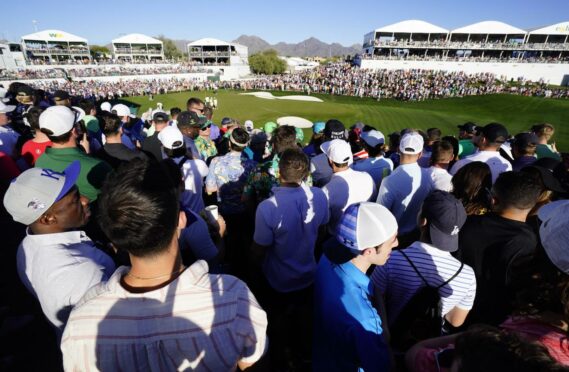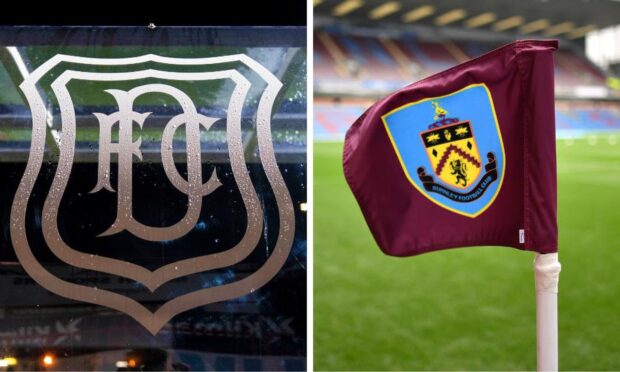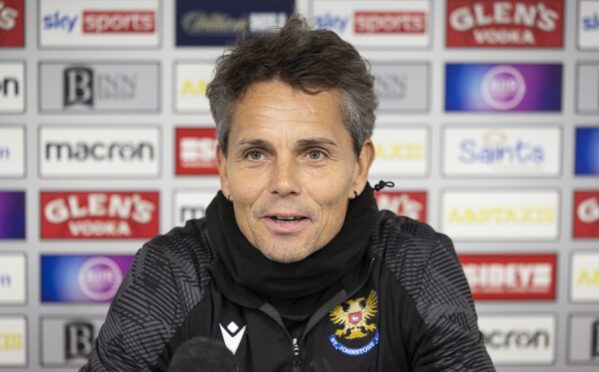The sight of a sea of beer bottles strewn across the 16th at the weekend’s Waste Management Open in Phoenix got me thinking about my own recent experience of drink and sport.
Very recent.
This weekend T2G, in our other guise as correspondent of all egg-chasing, was in Wales for the Six Nations game at the Principality Stadium.
The stadium that used to be known as the Millennium is renowned as the most atmospheric in rugby. But it has an ongoing anti-social behaviour problem fuelled by alcohol.
I’d actually say that the anti-social issue extends to the entirety of Cardiff city centre on match days, but inside the Principality is the one place the governing body in Wales, the WRU, can control.
The new rules don’t work
ICYMI: The WRU will serve weaker beer and shut bars after half-time in Six Nations games to try to help curb anti-social behaviour at the Principality Stadium ⤵️
— BBC Sport Wales (@BBCSportWales) February 3, 2022
Described memorably by a Welsh colleague as “the world’s biggest Wetherspoons” the alcohol consumption at the Principality is actually frightening. Initially it was just irritating – reporters having pints poured over their laptops, or their copy erased by a drunk (that was me – the reporter, not the drunk).
But it got progressively worse, and last autumn drunken fans went on to the pitch during play. There were reports of people being verbally abused, assaulted and even an alleged case of someone vomiting on a young fan.
So the WRU decided to serve weaker beer (4.1% instead of 5%) and shut the bars at half-time for the game against Scotland. Did it work?
Did it hell. First, it clearly appeared everyone was drinking MORE to get the pints in before the bar closures. The usual steady stream of people to and from the bars (and the loos) was even greater.
A balancing act
The Waste Management Open is absolutely electric after Sam Ryder’s Hole-In-One.
🎥 @GOLFonCBS pic.twitter.com/7wWQ1S9FGx
— Jake Winderman (@jakewinderman) February 12, 2022
Just after half-time, I saw an already well-oiled fan precariously wobbling down the aisle near the press box carrying EIGHT pints – one tray of four balanced upon the other.
Scurrying to the safety of the car park after the game at around 7pm, the streets around the stadium were the same as usual. Drunks everywhere, one sitting in the gutter contemplating the previous contents of his stomach. In the pouring rain.
I had to quickly swerve on St Mary’s Street to avoid being floored by a middle-aged couple, both sozzled and staggering.
There may be an age issue at work here. This was my 16th time covering a game in Cardiff, and I’m much too old for the party lifestyle these days. Young friends of mine went to the game this year and had a ball, before, during and especially after.
But there clearly is a problem. And now unless there’s a blanket ban in the stadium or serious restrictions on beer sales – unlikely given the money the cash-strapped WRU must make on it – then it’s never going to get any better.
Another sporting event becomes a drinking party
Sure. It changes the perception of golf. People see this and think “wow, maybe golf isn’t so stuffy and elitist. Maybe it can be fun.” As such, they’re more likely to want to pick up the game or go to a tournament. Really not that complicated.
— Dan Rapaport (@Daniel_Rapaport) February 12, 2022
That’s my attitude to what we saw in Phoenix. There too a sporting event has become a drinks party, fuelled by cheap alcohol and a young audience out for a good time.
The shower of bottles on the 16th tee at the WMO seems to be regarded by some as basically harmless. Even as a sign that golf is no longer stuffy and staid and can appeal to a younger, livelier, audience.
There might – just might – be a point to that. But this and the general level of abuse seen at the Ryder Cup in recent times (also fuelled by excess alcohol) are not just contrary to golf’s accepted standards of behaviour.
They’re a sign of what’s increasingly acceptable – or at least tolerated – in sporting audiences, and almost promoted by social media.
Can we contain anti-social behaviour in golf?
"Americans can't drink"
Thomas Pieters rips American Ryder Cup fans and the 2016 setup at Hazeltine:https://t.co/7ASyPXKKrJ pic.twitter.com/ZXwrFrbHx3
— Golf World (@GolfWorld) September 11, 2018
My initial thought was that while this kind of behaviour in golf was awful, it might be contained within the Ryder Cup and the WMO.
These are unique events that provoke a different reaction from a different crowd. So long as it doesn’t get completely out of hand or spread elsewhere, we could maybe live with it.
But having had the Cardiff experience for more than two decades now, I’m not so sure. It used to be manageable there. Now it seems out of control, and their measures to prevent it are basically useless.
The acid test is whether we see bottles thrown at other events, although probably not at super-posh Riviera Country Club at this week’s Genesis Invitational, I’ll wager. But there will be events which follow the WMO and crank up the beer sales. It just takes one drunk.
Abuse of players has become almost the norm in those previously genteel events in the USA.
How much longer before drunken revelry escapes the confines of the WMO? Is the genie out of this (thrown) bottle too?
RIP ‘El Gato’
1954 – 2022
The European Tour group is sad to hear of the passing of Eduardo Romero at the age of 67.
— DP World Tour (@DPWorldTour) February 14, 2022
The loss of Eduardo Romero, the great Argentinian golfer, to cancer has caused unanimous grief in the sport.
“El Gato” or “The Cat” – you only had to look at him to guess why he was called that – was a great player. 75 wins across the world, eight in Europe, and five Champions’ Tour wins, including a US Senior Open.
He often played well in Scotland. His last European Tour win was the Scottish at Loch Lomond in 2002. He lost a play-off in the Dunhill Links to Padraig Harrington the same year.
Eduardo Romero ‘ El Gato ‘ the beautiful golfer.
What a man! Such a warm character! With a kind heart! Inspirational ! Generous!..and alway😃Smiling! #legend We’ll all miss ‘the cat’ RIP 😥 pic.twitter.com/gPp7tlaGqg
— Ken Brown ..⛳️ (@KenBrownGolf) February 14, 2022
But it is Eduardo the man that most will remember best. He was an absolute diamond, as so many of the tributes concur. As a man of modest origins himself, he also put back into the game.
Taking the example of his countryman Robert de Vicenzo, who aided his path as a young player, El Gato financed multiple events in Argentina. He promoted and aided the careers of Angel Cabrera, Andres Romero (no relation) and Emiliano Grillo, among many others.
Argentina’s loss is acute. But so is all of golf’s.
So sad to hear today that one of the nicest men in earth has lost his battle with cancer. Eduardo Romero ‘El Gato’ ‘The Cat’ is a great loss but his smile will forever shine. A beautiful person. So sad. pic.twitter.com/Xb0bFN1Gq3
— David Cannon (@Cannonball63) February 14, 2022










